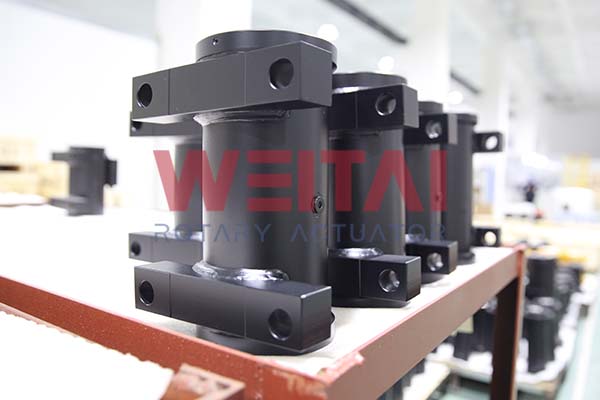When it comes to rotary motion control, various actuator types offer unique advantages depending on the application. Among them, 270-degree rotary actuators stand out for their specific range of motion. This post will compare 270-degree rotary actuators to other common types, highlighting their distinct features and ideal use cases.

Overview of 270-Degree Rotary Actuators
270-degree rotary actuators provide a wide range of movement that allows for more flexibility than standard 90-degree actuators. They can achieve three-quarters of a full rotation, making them suitable for applications requiring extensive positioning without the need for a full 360-degree motion. This capability often results in improved efficiency and functionality in various systems.
Comparison with Other Actuator Types
90-Degree Rotary Actuators:
- Range of Motion: As the name suggests, these actuators are limited to a quarter turn, making them ideal for applications with straightforward open/close functions.
- Applications: Commonly used in HVAC systems, valve control, and assembly lines, 90-degree actuators excel in situations where simplicity is key.
- Limitations: Their restricted movement can be a drawback in scenarios requiring more complex positioning, where 270-degree actuators can provide a better solution.
360-Degree Rotary Actuators:
- Range of Motion: These actuators allow continuous rotation, making them suitable for applications requiring full-circle movement.
- Applications: Ideal for robotic arms, conveyor systems, and any application needing uninterrupted rotation.
- Limitations: While they offer versatility, the complexity of their design can lead to increased wear and tear, particularly in high-speed applications compared to the more robust 270-degree options.
Linear Actuators:
- Range of Motion: Unlike rotary actuators, linear actuators provide straight-line motion, essential for applications requiring linear positioning.
- Applications: Common in lifting systems, robotics, and automation where straight movements are essential.
- Limitations: While they excel in specific applications, they cannot achieve rotational movement, making them less versatile for tasks requiring both linear and rotary functions.
Servo Actuators:
- Range of Motion: Servo actuators can be configured for various ranges of motion, including both limited angles and continuous rotation.
- Applications: Widely used in robotics, CNC machinery, and applications requiring precise control.
- Limitations: While offering high precision, servo systems can be more complex and expensive to implement compared to simpler 270-degree rotary actuators.
Advantages of 270-Degree Rotary Actuators
- Versatility: They strike a balance between limited and continuous rotation, making them suitable for a variety of applications, from robotics to manufacturing processes.
- Efficiency: The ability to perform a 270-degree rotation often results in reduced cycle times compared to other actuator types that may require multiple movements to achieve the same positioning.
- Simplified Control: Their straightforward design allows for easier integration into existing systems, often requiring less complex control mechanisms than servo or continuous rotation actuators.
Conclusion
When comparing 270-degree rotary actuators to other actuator types, it’s clear that they offer unique advantages in versatility and efficiency. While 90-degree and linear actuators excel in simplicity and direct motion, and 360-degree actuators provide continuous rotation, 270-degree rotary actuators fill a vital niche for applications that require extensive yet controlled rotational movement. Understanding these distinctions can help engineers and designers select the right actuator for their specific needs, enhancing performance and efficiency across various industries.
